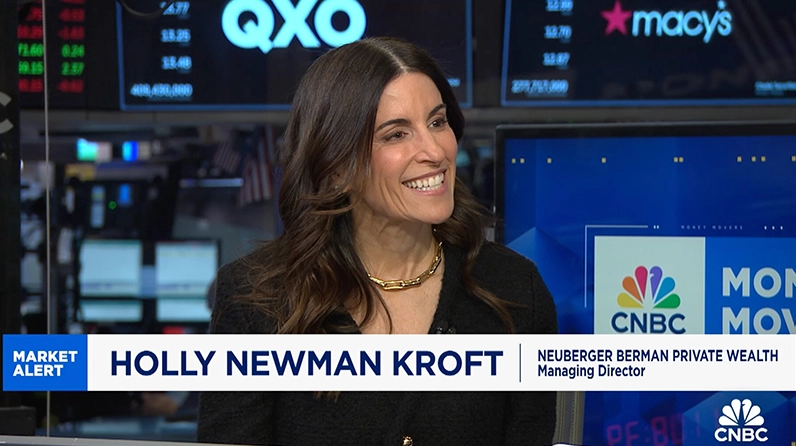

Today’s release reflects a U.S labor market in balance and it is likely that the Fed will keep the fed funds rate at the current level at the next meeting with their focus moving to the potential inflationary impact of tariff
January’s non-farm payrolls release came in modestly below expectations, up only +143k versus the consensus estimate for +166k. Driving the print were notable gains in health care, retail, and social assistance (+44k, +34k, and +22k, respectively), as well as government (+32k) which has yet to reflect the Trump Administration’s efforts to decrease federal payrolls.
More constructive were the upward revisions to November and December’s already strong prints, with +49k and +51k added respectively to the tallies. Despite these revisions, however, the average non-farm payrolls growth on a monthly basis was revised lower to +166k from +186k for 2024. This downward revision had been expected and was perhaps less dramatic than what economists had thought.
While payrolls came in light, average hourly earnings were much stronger than expected, up +0.5% month-over-month versus the expected +0.3%. This was likely skewed higher by a tick lower in average hours worked to 34.1; this was led by a decline in services hours worked, likely a byproduct of both weather and the Los Angeles area wildfires.
The household survey was strong for the second month in a row, as employed persons rose by 2.2 million and unemployed persons declined modestly; both reflect the population adjustments by the Bureau of Labor Statistics to account for recent immigration trends. The unemployment rate continued to decline, falling back to 4.0% from 4.1% in December, even as the participation rate increased to 62.6% from 62.5%.
When taken in aggregate, the report reflects a U.S labor market in balance, and it is likely that the Fed will keep the fed funds rate at the current level for the next meeting. Putting this month’s reading aside, there is little evidence that last year’s strong GDP growth is translating to meaningful, potentially disruptive wage gains. More importantly, the state of the labor market implies a greater emphasis on the inflation side of the mandate and that points to a keen interest in the outcome of tariff discussions. (Please click here to read our February 3rd CIO Notebook: Trump Comes Out Swinging on Trade.) While currently on hold for Canada and Mexico, we anticipate that there will be additional announcements around tariffs for Europe as well as an expansion of the tariffs on China – all of which could increase costs for U.S. consumers, at least in the short term, and could put pressure on the Fed to remain on hold even longer.


INSIGHTS
CIO Notebook: Payrolls to the Wings as Tariffs Take Center Stage

INSIGHTS
CIO Notebook: Risk Assets Under Pressure as Trump Expands Tariffs

VIDEO
Holly Newman Kroft Discussed Market Uncertainty on CNBC

VIDEO
Celebrating Women’s History Month 2025

INSIGHTS
CIO Notebook: Fed Holds Rates Steady but Projections Reflect Policy Uncertainty

INSIGHTS
Private Equity in Perspective: Navigating Extremes and Unlocking Long-Term Value

INSIGHTS
CIO Notebook: Cooler Inflation Calms Nerves but Tariffs Still Loom Large
Accolades
Our Advisors Ranked in “Barron’s Top 1,200 Financial Advisors” List for 2025
INSIGHTS
CIO Notebook: Light U.S. Payrolls Close Out a Noisy Week
MARKET COMMENTARY
Trade Debates While Markets Rotate
INSIGHTS
U.S. Tariffs Hit Markets as Growth Questions Emerge
VIDEO
Holly Newman Kroft Joined CNBC to Discuss Market Outlook
Accolades
Forbes | SHOOK 2025 Top Women Wealth Advisors
IMPORTANT INFORMATION:
This material is provided for informational purposes only and nothing herein constitutes investment, legal, accounting or tax advice, or a recommendation to buy, sell or hold a security. This material is general in nature and is not directed to any category of investors and should not be regarded as individualized, a recommendation, investment advice or a suggestion to engage in or refrain from any investment-related course of action. Any views or opinions expressed may not reflect those of the firm as a whole. Neuberger Berman products and services may not be available in all jurisdictions or to all client types. Diversification does not guarantee profit or protect against loss in declining markets. Investing entails risks, including possible loss of principal. Investments in private equity are speculative and involve a higher degree of risk than more traditional investments. Investments in private equity are intended for sophisticated investors only. Unless otherwise indicated, returns shown reflect reinvestment of dividends and distributions. Indexes are unmanaged and are not available for direct investment. Investing entails risks, including possible loss of principal. Past performance is no guarantee of future results.
Portfolio positioning views expressed herein are those of Neuberger Berman’s Private Wealth Investment Group, which may include those of the Neuberger Berman’s Asset Allocation Committee. Asset allocation and positioning views are based on a hypothetical reference portfolio. The Private Wealth Investment Group analyzes market and economic indicators to develop asset allocation strategies. The Private Wealth Investment Group works in partnership with the Office of the CIO. The Private Wealth Investment Group also consults regularly with portfolio managers and investment officers across the firm. The Asset Allocation Committee is comprised of professionals across multiple disciplines, including equity and fixed income strategists and portfolio managers. The Asset Allocation Committee reviews and sets long-term asset allocation models, establishes preferred near-term tactical asset class allocations and, upon request, reviews asset allocations for large, diversified mandates. Asset Allocation Committee members are polled on asset classes and the positional views are representative of an Asset Allocation Committee consensus. The views of the Asset Allocation Committee and the Private Wealth Investment Group may not reflect the views of the firm as a whole and Neuberger Berman advisers and portfolio managers may take contrary positions to the views of the Asset Allocation Committee or the Private Wealth Investment Group. The Asset Allocation Committee and the Private Wealth Investment Group views do not constitute a prediction or projection of future events or future market behavior. Defensive positioning generally means an underweight bias on allocations to risk assets such as equities and alternatives. Positioning views may change over time without notice and actual client positioning may vary significantly. Discussion of yield characteristics or total returns of different asset classes are for illustrative purposes only. Such asset classes, such as equities and fixed income, may have significantly different overall risk-return characteristics which should be consider before investing.
The information in this material may contain projections, market outlooks or other forward-looking statements regarding future events, including economic, asset class and market outlooks or expectations, and is only current as of the date indicated. There is no assurance that such events, outlook and expectations will be achieved, and actual results may be significantly different than that shown here. The duration and characteristics of past market/economic cycles and market behavior, including any bull/bear markets, is no indication of the duration and characteristics of any current or future be market/economic cycles or behavior. Information on historical observations about asset or sub-asset classes is not intended to represent or predict future events. Historical trends do not imply, forecast or guarantee future results. Information is based on current views and market conditions, which will fluctuate and may be superseded by subsequent market events or for other reasons.
Discussions of any specific sectors and companies are for informational purposes only. This material is not intended as a formal research report and should not be relied upon as a basis for making an investment decision. The firm, its employees and advisory accounts may hold positions of any companies discussed. Nothing herein constitutes a recommendation to buy, sell or hold a security. It should not be assumed that any investments in securities, companies, sectors or markets identified and described were or will be profitable. Investment decisions and the appropriateness of this content should be made based on an investor's individual objectives and circumstances and in consultation with his or her advisors.
Neuberger Berman Investment Advisers LLC is a registered investment adviser.
The “Neuberger Berman” name and logo are registered service marks of Neuberger Berman Group LLC.